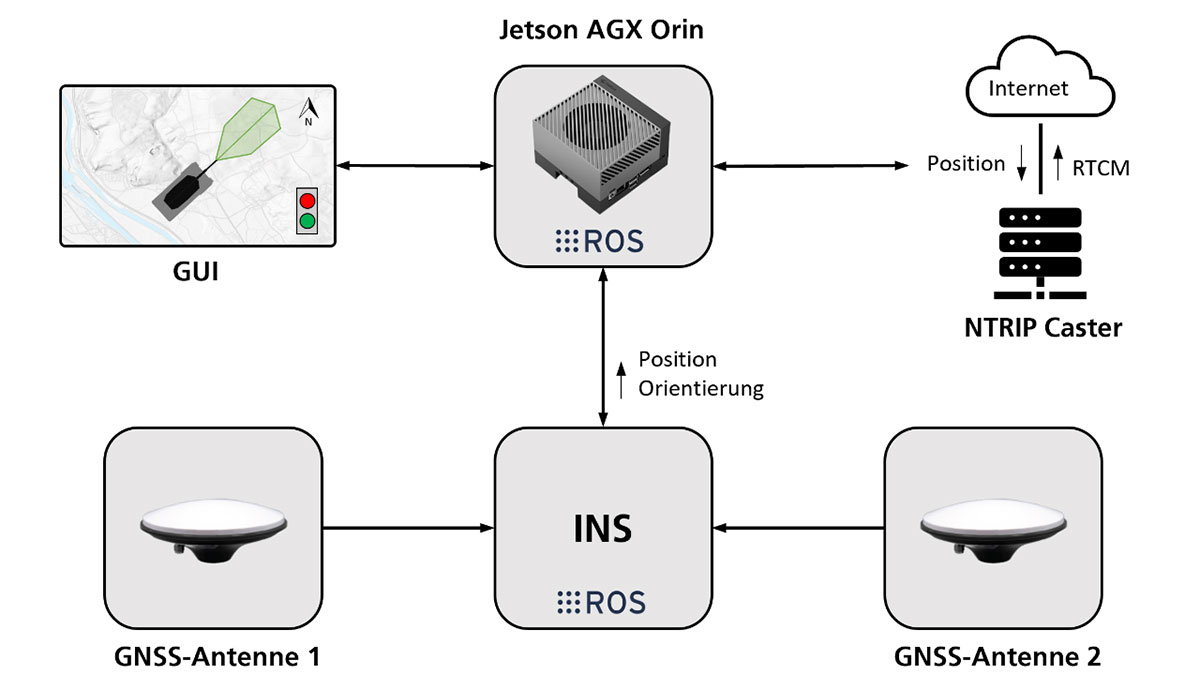The capabilities of weapon systems designed for use in dynamic deployment scenarios cannot be fully investigated in purely static test scenarios.

This gives rise to the need for a way of investigating weapon systems in dynamic scenarios while maintaining firing safety. A firing range limitation system developed at Fraunhofer EMI monitors the position and orientation of the weapon system. This system can be used to automatically restrict the release for firing to permissible ranges.
Development of an electronic firing range limiter
As part of a feasibility study with the Unterlüß Test Center (EZU) of Rheinmetall Waffe Munition GmbH, Fraunhofer EMI is developing an electronic dynamic firing range limiter that can be adapted as an external attachment to a Leopard 2 main battle tank (selected here as an example). A functional illustrator was developed that can be mounted on the vehicle via a standard interface for testing with only minimal system intervention and can be removed again afterwards.
In contrast to conventional mechanical range limiters, this is a multi-sensor platform that can also be used in driving mode. The system uses GNSS (Global Navigation Satellite System) to measure its current position and an inertial measurement system to measure its movement. Based on the local conditions of the test site, a GIS-supported analysis (Geographic Information System) incorporating the merged sensor data is used to determine in real time the permissible weapon orientation and weapon position in which a shot may be fired. Depending on the ammunition, vehicle speed and space conditions, the precision and speed requirements are technically challenging. Added to this is the load caused by the shot, against which the system must be hardened.
Real-time analysis for reliable weapon alignment
There are three main requirements: Measurement deviation of the azimuth, output data rate of position and orientation, and the shock resistance of the system.
A satellite-based inertial navigation system (INS) is used to determine the absolute orientation of the gun. The INS provides continuously updated information on the vehicle’s orientation, while two GNSS multiband antennas are used to correct the azimuth. Using real-time kinematics (RTK), it is possible to specify the antenna positions in a range between 1 cm and 2 cm.
The Jetson AGX Orin developer kit from Nvidia is used for the real-time evaluation of the shot release and the processing of the fused sensor data from the INS.
